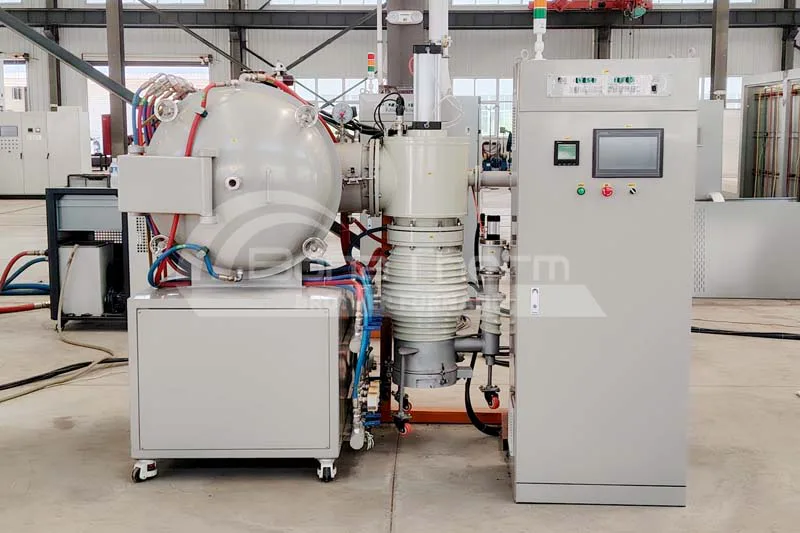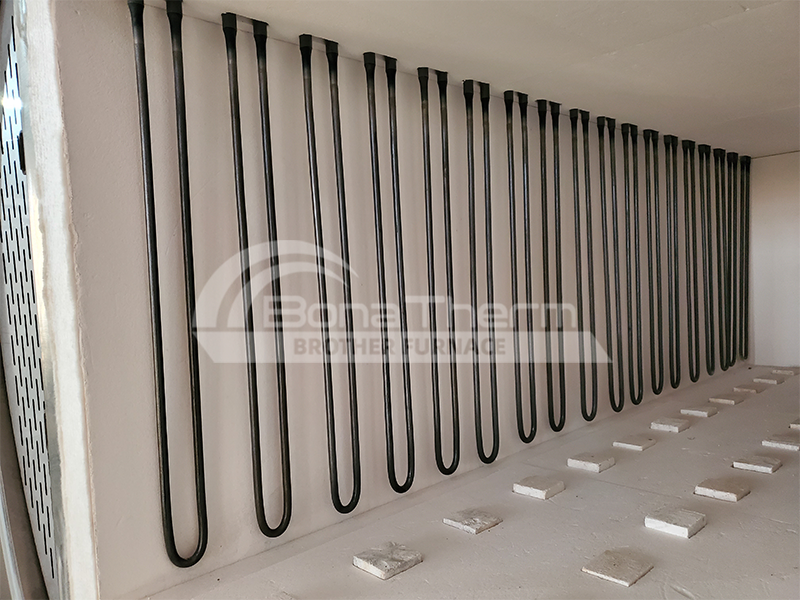What is Brazing: Definition, Benefits, and Specialized Brazing Machines
- By: Brother Furnace
- 2024-10-07 23:16
Brazing is a metal-joining process that involves melting a filler metal to join two or more base metals together. Unlike welding, which melts the base metals, brazing utilizes lower temperatures to ensure the integrity of the original materials. The result is a robust and durable joint that is ideal for numerous applications.
This method is particularly advantageous in situations where high precision and minimal distortion are crucial, such as in aerospace, automotive, and electronic components. The filler metal, often a brass, bronze, or silver-based alloy, flows into the joint by capillary action, filling any gaps and creating a strong, seamless bond.
In this article, Brother Furnace will delve into the specifics of brazing,
exploring its benefits, the types of specialized brazing machines available, and
the various industries that rely on this versatile metal-joining technique.
Brazing: A popular heat treatment process
Definition of Brazing
Brazing is a method of joining metals through the application of heat and a filler metal that has a melting point above 450 °C (about 840 °F) but below the melting point of the base metals. The process involves a careful balance of temperature and materials to create a strong bond without compromising the properties of the base metals.
How to Braze
To better understand how brazing works, let’s break down the process into key steps:
1. Preparation: Clean the surfaces of the materials to be joined, removing any oxides or contaminants. Proper surface preparation is critical to ensure good adhesion.
2. Assembly: Position the base metals and insert the filler metal into the joint. The filler metal should be chosen based on compatibility with the base metals and the intended application.
3. Heating: Apply heat using a suitable source, such as a torch, brazing furnace, or
induction heater, to melt the filler metal. The heat must be carefully
controlled to avoid overheating the base metals. As a professional brazing
furnace manufacturer, Brother Furnace's brazing furnaces are well suited to meet
your brazing needs.
4. Capillary Action: Once the filler metal reaches its melting point, it flows into the joint through capillary action. This is a key characteristic of brazing, allowing it to fill gaps and create tight seals.
5. Cooling: Allow the joint to cool, solidifying the filler metal and creating a strong bond. The cooling process should be gradual to avoid thermal shock, which can lead to cracks.
The Purpose of Brazing
Joining Materials
One of the primary purposes of brazing is to combine different metals and materials effectively. This method is particularly useful for connecting dissimilar metals, such as copper and stainless steel, which are challenging to weld. The ability to join various materials expands the design possibilities in manufacturing.
Increase Strength and Durability
Brazed joints are known for their strength and durability. The process creates a metallurgical bond that enhances the mechanical properties of the joint, making it suitable for high-stress applications. The resulting joints can withstand vibrations, thermal cycling, and heavy loads.
Versatility
Brazing is highly versatile and finds applications in various industries,
including automotive, aerospace, and HVAC. Its ability to join different
materials and create robust joints makes it a preferred choice in many
manufacturing processes. Whether it's in the production of heat exchangers,
electronic components, or structural assemblies, brazing offers a reliable
solution.
Benefits of Brazing
Efficiency
Brazing is often more time and cost-efficient compared to other joining methods like welding. The lower temperatures and quicker process can reduce energy costs and production time. Additionally, the preparation time is often shorter, as brazing requires less extensive joint preparation than welding.
Precision
Brazing allows for the creation of precise and clean joints, which is particularly important in applications where aesthetics and functionality are critical. The process produces minimal thermal distortion, meaning that the dimensions of the base material processed in the brazing furnace remain essentially unchanged.
Material Compatibility
One of the significant advantages of brazing is its ability to join dissimilar metals. This opens up a wide range of possibilities in product design, allowing you to select materials based on performance rather than compatibility.
Minimal Thermal Distortion
The lower temperatures used in brazing, compared to welding, result in
minimal thermal distortion. This is particularly beneficial in applications
where tight tolerances must be maintained. The risk of warping or damaging
sensitive components is significantly reduced, making the brazing furnace a
reliable choice for precision work.
Types of Brazing
Understanding the different types of brazing methods is crucial for selecting the right approach for specific applications.
Torch Brazing
Torch brazing involves using a handheld torch to heat the base metals and filler material. This method is flexible and can be used in various settings, from small workshops to large industrial facilities. It's particularly useful for repairs and small production runs.
Furnace Brazing
Furnace brazing is performed in a controlled environment, using a brazing furnace to achieve uniform heating. This method is beneficial for industrial
applications, where consistent quality and repeatability are essential. The
controlled atmosphere reduces the risk of oxidation and contamination.
Induction Brazing
Induction brazing uses electromagnetic induction to heat the base metals rapidly. This method is highly efficient and allows for precise control over the heating process. It is commonly used in applications requiring high-speed production and strict quality control.
Dip Brazing
Dip brazing involves immersing the assembled parts in a molten bath of filler metal. This method is suitable for larger assemblies and is often used in the aerospace and automotive industries. Dip brazing offers uniform heating and excellent joint quality.
Choosing the Right Brazing Equipment
Brother Furnace reminds you: When selecting a brazing furnace, several key features should be considered:
Key Features to Look For
1. Temperature Control: Ensure the furnace can maintain the necessary temperature for your specific brazing applications.
2. Atmosphere Control: A controlled atmosphere is crucial for preventing oxidation and ensuring high-quality joints.
3. Size and Capacity: Consider the size of the components you will be brazing
and choose a furnace with the appropriate capacity.
Types of Brazing Furnaces
Furnaces can be categorized into batch and continuous types. Batch furnaces are ideal for smaller production runs and custom work, while continuous furnaces are better suited for high-volume production.
Top Brands and Models
When choosing a brazing furnace, it's important to research reputable brands known for their reliability and performance. Popular models often come equipped with advanced features that enhance efficiency and control. As a professional brazing furnace manufacturer, Brother Furnace has received many favorable comments from customers from different countries.
Cost Considerations
The cost of brazing furnaces can vary widely based on features, size, and brand. It’s essential to consider the total cost of ownership, including maintenance, operational costs, and potential downtime.
Maintenance and Support
Regular maintenance is critical for ensuring the longevity and performance of your brazing furnace. Consider the availability of customer support and service when making your decision. Brother Furnace can provide you with professional pre-sale and after-sale services. As a responsible enterprise, Brother Furnace will continue to escort your subsequent experiments and production.
Conclusion
In summary, brazing is a valuable technique for joining metals that offers numerous advantages, including strength, versatility, and efficiency. Understanding the purpose and benefits of brazing is essential for making informed decisions about your manufacturing processes.
Brother Furnace encourages you to explore the available brazing furnaces and
consider your specific needs. Investing in the right equipment can significantly
enhance the quality and efficiency of your metal-joining operations.
For more information on brazing techniques, furnaces, and applications, check out our additional resources and related articles.
If you have any questions or would like to purchase a brazing furnace, feel free to leave a message or get in touch with us. Brother Furnace is here to help you make the most informed decisions for your metal-joining needs!




